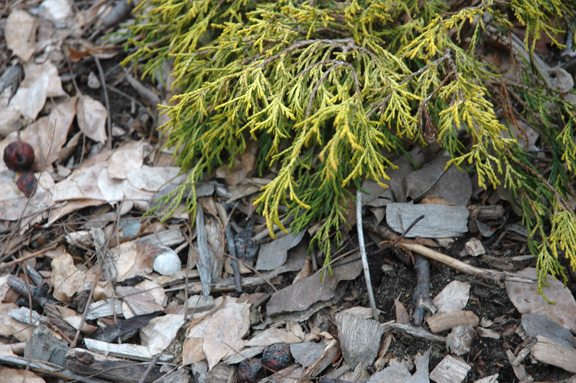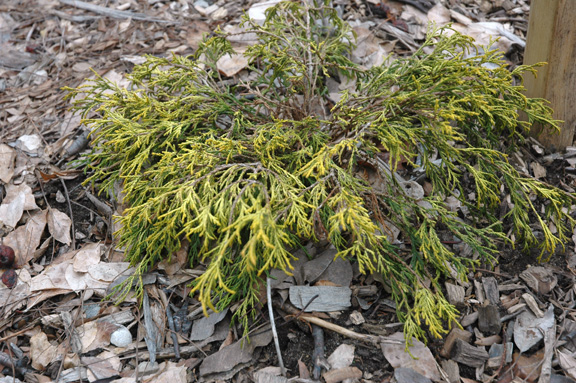| General Description | Lemon thread Japanese false cypress has thin awl shaped foliage. It’s a slow growing mounding plant that after 20 years of growth will only be around 3 m. On mature specimens there will be a reddish-orange exfoliating bark. |
| ID Characteristic | Distinct yellow colour, foliage is thread like awls very loose mounded distinct cones vary in size from 2.24-4.48 cm with 5-6 scales on each cone. On older specimens there will be reddish-orange exfoliating bark. Also has weeping branches that would almost seem stringy or cord like and also has strip like bark. |
| Shape | Semi-dwarf conifer, mounded, eventually pyramidal over time. |
| Landscape | The lemon thread Japanese false cypress can be used in rock gardens; small areas also can be used as an accent plant. |
| Propagation | Cuttings should be taken in October, November or December and should be treated with 1000 ppm IBA and placed in sand. Another way is grafting the cutting to an under stock. |
| Cultivation | Needs moist loamy, but well drained soil. Does best in full sun. |
| Pests | No known serious insect or disease problems. Plants in the genus Chamaecyparis generally have some susceptibility to juniper blight, root rot and certain insect pests such as bagworms. |
| Notable Specimens | The Gardens of Fanshawe College, dwarf conifer garden, London, Ontario, Canada. |
| Habitat | Horticultural origin. |
| Bark/Stem Description | Smooth, reddish-orange plated bark that peels off in strips on older specimens the bark will exfoliate being a reddish-orange colour as well. |
| Leaf Description | Very fine tassel like branchlets presenting an appearance of lace. The leaves are patterned awl-like and do not grow densely together. 4-8 cm long leaf growth. |
| Flower Description | Monoecious flowering shrub with no flower interest. |
| Fruit Description | Small pea-like cones 2.2 - 4.5 cm in size found clustered on short stalks mostly at branch tip. Light brown in colour cone scales tend to be wrinkled and soft. |
| Colour Description | Strong yellow colour when in full to partial sun. In shaded areas may lose some colour almost gaining a greenish colour. On the underside of the branch there is a white like line. |
| Texture Description | Very fine texture. When touching the foliage against the growth the leaves are sharp and awl-like, otherwise it is soft to the touch. |

